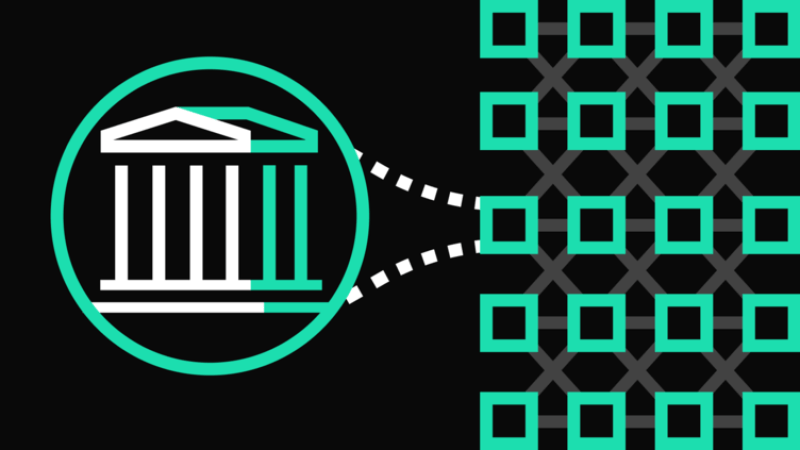DeFi and Centralized Exchanges Build Better Future Together


DeFi (Decentralized Finance) is a broad term that is used when referring to a range of financial services and products based on open-source blockchains. Most often, decentralized applications, also known as dApps, run on the Ethereum blockchain. Everyone who has an internet connection can access this finance ecosystem because it’s completely open.
During the last year, DeFi became quite a popular subject in the industry. Given that there is a huge amount of the ETH cryptocurrency locked in DeFi, it’s easy to evaluate user engagement. Currently, this number is at an all-time high of 3.1 million ETH. This is roughly $1.7 billion. Most of these DeFi assets were created this year. Some of these tokens, however, have already demonstrated double-digit growth, and the reason is that DeFi can offer something that Fintech can’t.
Challenges of Decentralization
Blockchain has already become a very popular platform, like the web or PC. Every platform, however, depends on its primitives. While web applications are based on such primitives as FTP and HTTP, primitive DeFi is represented by two cryptocurrencies: ETH and BTC.
While HTTP and FTP served as the basis for the web, BTC and ETH created the DeFi economy. They can be used to build tools for debt, lending, synthetic equities, etc. At the same time, blockchain inevitably inherits these cryptocurrencies’ limitations. ETH and BTC, as well as many other cryptocurrencies, are highly volatile and they are characterized by a high correlation to each other. Therefore, they create a risk of auto-liquidation or over-collateralization.
Banks rely on balance sheets, and they should also have a certain type of collateral in reserve. They need it to be beyond debt and credit, and it’s called base-money. Base-monies are primitives that don’t have balance sheets and exist within a certain sector. For many years, economists have been looking for the perfect base money, and the solution hasn’t been discovered yet.
Decentralized banks use decentralized base-monies and try to compensate for high volatility by increasing collateralization. Quite often, the amount locked up exceeds the amount that must be represented, and the risks of auto-liquidations become more and more tangible.
Centralized Exchanges Come Into Play
ChainTalk’s Crypto Asia Summit that took place in September in Tokyo attracted a lot of attention and many participants from all over the world. One of the most interesting things that happened at this online summit was a speech by Eagle Huang, the CEO of Deepcoin. Deepcoin is the biggest cryptocurrency trading platform in Asia. Huang’s speech was dedicated to the DeFi market and its relationships with centralized exchanges. Deepcoin is a global trading platform that provides a vast variety of financial services. This platform has obtained many regulatory licenses, including the U.S. and Canadian MSB, as well as the U.S. NFA.
Huang noted that, after the total value locked in DeFi surpassed $8 billion, it became evident that the market recognizes the value of DeFi innovations. He also pointed out that many users have idle liquidity, as ETH and USDT don’t need temporary trading. Huang noted that Uniswap has not only such traditional features of decentralized protocols as anonymity and security but also additional benefits for users. For instance, ordinary users can become market makers by providing liquidity, and the public becomes able to share the benefits of transaction fees. At the same time, it also provides simple mechanisms of participation, such as AMM.
Huang stated that Deepcoin is going to focus on DeFi in the future and explained that centralized exchanges and DeFi are complementary. There is a three-level relationship, which includes the application, protocol layer, and the bottom layer infrastructure. Usually, the bottom layer is a public blockchain similar to Ethereum or Bitcoin. DeFi is the protocol layer that has not only UNI transactions but also oracles represented by Chainlink, loans represented by Maker, etc.
The Future of DeFi and Deepcoin
It makes sense to expect more protocol layer innovations to appear in the future. It’s easier for users to participate in the application layer, the way centralized exchanges work. Centralized exchanges and DeFi can perfectly complement each other, and the main reason is that a single protocol layer is difficult to deliver to the end-users directly.
Huang notes that it’s the same as requiring users to buy and assemble chips themselves. This is a reason why so few players are participating now, and many retail investors who are unable to mine DeFi directly become receivers as a result of investing in DeFi tokens on centralized exchanges.
Deepcoin isn’t going to simply use the DeFi crypto. Current DeFi tokens are a result of risk-free returns to big players so Deepcoin hasn’t used DeFi tokens yet. Instead, Deepcoin plans to continue to choose high-quality assets for users and to continue to simplify the way users can participate by encapsulating the application layer to the protocol layer.
The company plans to help its users choose top risk-free DeFi projects that are based on stable coins so that the users can be directly involved in the protocol layer to get liquidity. According to Huang, when professionals work within their professional areas, they can simplify participation for users, therefore making DeFi more mainstream. When it comes to blockchain, decentralized approaches do not always guarantee convenience and stable growth so combining DeFi and centralized exchanges can be a great solution that will make DeFi more appealing to the general public.
Conclusion
DeFi demonstrates growing adoption rates, and it makes sense to expect DeFi to take the leading position in the crypto industry and to get more attention. Obviously, one of the main factors that will contribute to the DeFi growth will be the Ethereum upgrades. However, centralized exchanges can also make a big difference by eliminating some common difficulties for end-users and enabling them to benefit from top-grade safety modules.
While many companies operate exchanges like games or casinos, Deepcoin has impressive long-term goals and is going to focus on products. Deepcoin believes that exchanges are the core of the blockchain ecosystem, and its innovations may set a new direction for the development of DeFi.
Author bio:
Melissa Mauro is a freelance writer who creates quality and original content. She is working for the companies as Best Writers Online and Online Writers Rating writing services review in the translation department and wants to find new platforms for professional growth. She believes that creativity and improvement are things, which distinguish a good writer.

トップチュートリアル
-
Что такое хард-форк?Jul 27, 2020
-
Стейкинг на Ethereum 2.0 и его основные особенностиAug 01, 2020
-
Инновации на основе блокчейна в сфере энергетикиAug 03, 2020






まだコメントがありません。最初のコメントを書きましょう!